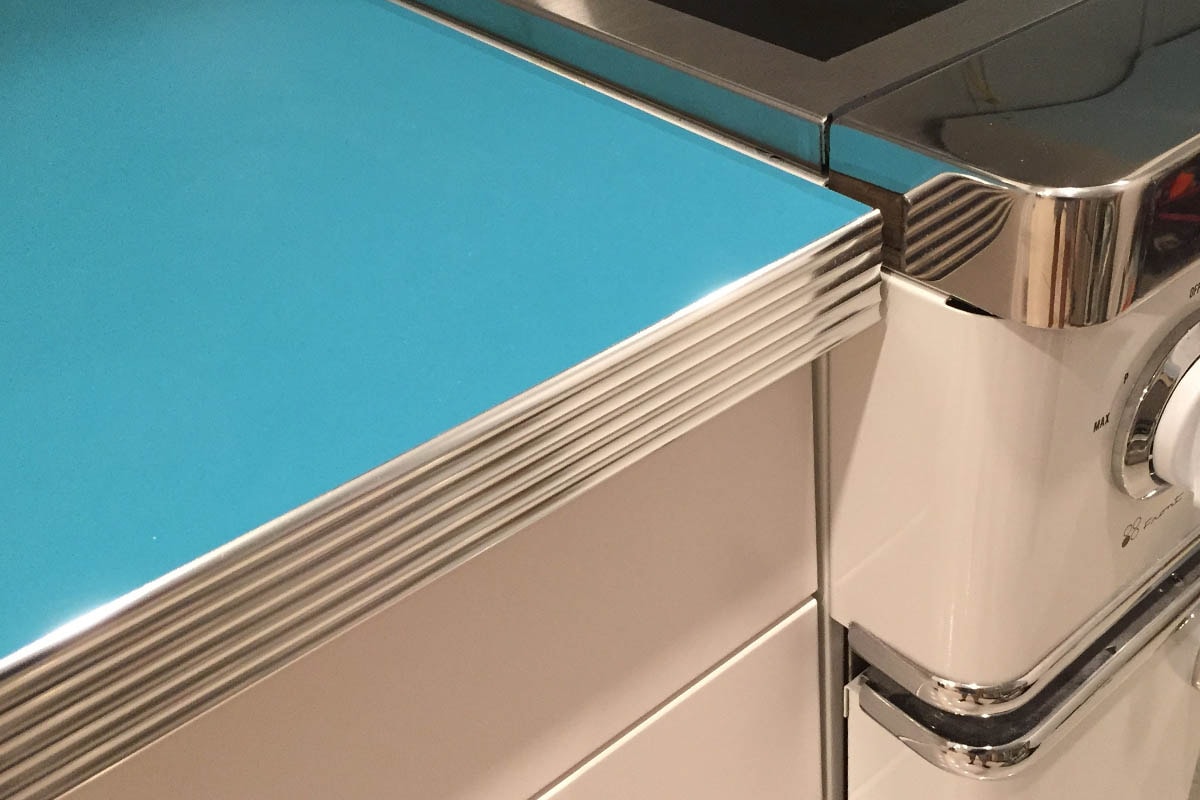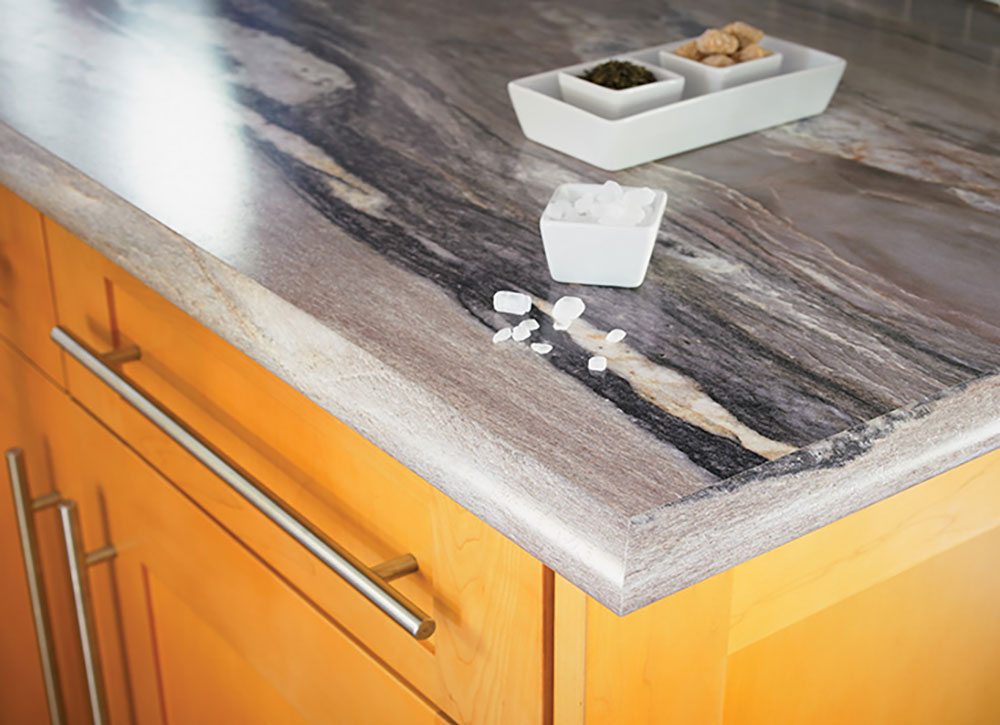Understanding Trim and its Purpose

Trim, also known as molding, is an essential decorative element in interior design, particularly in kitchens. It adds visual appeal and functionality, enhancing the overall aesthetic and creating a cohesive look.
Types of Trim for Kitchen Cabinets
Trim plays a crucial role in defining the style and character of your kitchen cabinets. Different types of trim are available, each serving a unique purpose.
- Crown Molding: This decorative trim is installed at the top of cabinets, where it meets the ceiling. It adds a touch of elegance and sophistication, creating a seamless transition between the cabinets and the ceiling. Crown molding comes in various profiles, from simple to elaborate, allowing you to choose a style that complements your kitchen’s design.
- Base Molding: Base molding is installed at the bottom of cabinets, where they meet the countertop. It provides a finished look and protects the cabinets from scratches and dents. Like crown molding, base molding is available in different profiles and materials, offering versatility in style and durability.
- Cabinet Door Trim: This trim is applied to the edges of cabinet doors, adding a decorative touch and enhancing the overall look. Cabinet door trim can be used to create different styles, such as traditional, modern, or farmhouse, depending on the profile and material chosen.
Benefits of Adding Trim to Kitchen Cabinets
Adding trim to your kitchen cabinets offers several benefits beyond aesthetics.
- Enhanced Aesthetics: Trim adds visual interest and depth to your kitchen cabinets, creating a more polished and refined look. It can transform plain cabinets into stunning focal points, elevating the overall design of your kitchen.
- Defining Spaces: Trim helps to define different areas within your kitchen, such as the work triangle, the dining area, or the breakfast bar. It creates a sense of order and organization, making the space feel more cohesive and inviting.
- Concealing Imperfections: Trim can be used to conceal imperfections in your cabinets, such as gaps or uneven surfaces. It provides a smooth, finished look, creating a professional and polished appearance.
Examples of Trim Styles
Trim can be used to create different styles and moods in your kitchen, depending on the type of trim, profile, and material chosen.
- Traditional: Traditional kitchens often feature ornate crown molding with intricate details, creating a classic and elegant feel. Base molding with a simple profile and cabinet door trim with raised panels complement the traditional style.
- Modern: Modern kitchens often feature clean lines and minimalist designs. Simple crown molding with a sleek profile, base molding with a contemporary design, and cabinet door trim with a flat or flush finish are common choices in modern kitchens.
- Farmhouse: Farmhouse kitchens are characterized by rustic charm and simplicity. Simple crown molding with a farmhouse profile, base molding with a weathered finish, and cabinet door trim with beadboard details create a warm and inviting atmosphere.
Choosing the Right Trim for Your Kitchen

Selecting the right trim for your kitchen cabinets is a crucial step in achieving a cohesive and aesthetically pleasing design. It adds a finishing touch that can elevate the overall look of your kitchen, but choosing the right trim involves careful consideration of several factors.
Matching Trim to Your Kitchen Design
The trim should complement the existing design elements of your kitchen. This includes the style of your cabinets, the overall theme of your kitchen, and your personal preferences.
- Cabinet Style: Consider the style of your cabinets. For traditional cabinets, ornate trims with intricate details would be a good choice. For modern cabinets, clean lines and simple trims are more appropriate.
- Kitchen Theme: The trim should align with the overall theme of your kitchen. For example, if your kitchen has a farmhouse theme, you might choose a rustic trim like beadboard or shiplap. For a contemporary kitchen, a sleek and modern trim would be more suitable.
- Personal Preferences: Ultimately, the choice of trim should reflect your personal taste. If you prefer a minimalist aesthetic, choose a simple trim. If you like more intricate details, you can opt for a more elaborate trim.
Matching Trim Color and Material to Existing Elements
The trim should seamlessly integrate with the existing elements of your kitchen, such as the countertops, backsplash, and flooring.
- Countertops: Consider the color and material of your countertops. If you have granite countertops, you might choose a trim that has a similar veining pattern. For quartz countertops, a simple and sleek trim would be a good choice.
- Backsplash: The trim should complement the color and pattern of your backsplash. If you have a busy backsplash, a simple trim would help to create a sense of balance. If you have a simple backsplash, a more ornate trim can add visual interest.
- Flooring: The trim should match the color and style of your flooring. If you have hardwood floors, you might choose a wood trim. If you have tile floors, you can opt for a trim that has a similar finish.
Trim Materials and Their Suitability
There are several trim materials available, each with its own pros and cons.
- Wood: Wood is a classic trim material that offers warmth and natural beauty. It’s available in a wide variety of species, finishes, and styles.
Pros: Durable, versatile, and adds a natural touch.
Cons: Can be susceptible to moisture damage and requires regular maintenance.
- MDF: Medium-density fiberboard (MDF) is a more affordable alternative to wood. It’s a dense and stable material that can be painted or stained to match any décor.
Pros: Affordable, smooth surface, and easy to work with.
Cons: Not as durable as wood and can be susceptible to moisture damage.
- PVC: Polyvinyl chloride (PVC) is a synthetic material that is highly resistant to moisture and mildew. It’s often used in kitchens and bathrooms due to its durability and low maintenance requirements.
Pros: Moisture-resistant, durable, and easy to clean.
Cons: Can be less aesthetically pleasing than wood or MDF.
Installation Process and Techniques: Adding Trim To Kitchen Cabinets

Installing trim around kitchen cabinets is a great way to enhance their appearance and create a polished, professional look. The process involves careful measuring, precise cutting, and secure attachment of the trim pieces.
Tools and Materials, Adding trim to kitchen cabinets
The tools and materials needed for installing trim around kitchen cabinets include:
- Miter saw: A miter saw is essential for making accurate cuts at precise angles, ensuring a clean and professional finish for the trim.
- Nail gun: A nail gun provides a quick and efficient way to attach the trim to the cabinets, ensuring a secure and lasting installation.
- Adhesive: A high-quality adhesive, such as construction adhesive, can be used to provide additional support and stability to the trim, especially in areas where nails are not suitable or difficult to use.
- Measuring tape: A measuring tape is essential for accurately measuring the dimensions of the cabinets and the trim pieces to ensure a perfect fit.
- Level: A level is crucial for ensuring that the trim is installed straight and even, creating a clean and professional appearance.
- Clamps: Clamps are helpful for holding the trim pieces in place during installation, ensuring a secure and accurate fit.
- Wood filler: Wood filler can be used to fill any gaps or imperfections in the trim, providing a smooth and seamless finish.
- Sandpaper: Sandpaper is used to smooth out any rough edges or imperfections in the trim, ensuring a polished and professional appearance.
- Primer and paint: Primer and paint are used to create a smooth, even, and durable finish on the trim, matching the existing cabinetry or creating a desired color scheme.
Measuring and Cutting Trim
Accurate measuring and cutting are crucial for achieving a professional and clean trim installation.
- Measure the length of the cabinet where the trim will be installed. This measurement will determine the length of the trim piece needed.
- Measure the width of the cabinet. This measurement will determine the width of the trim piece needed.
- Use a miter saw to cut the trim pieces to the desired length and angles. Miter cuts are used to create the corners of the trim, ensuring a clean and professional look.
- For inside corners, a 45-degree miter cut is typically used on both trim pieces. For outside corners, a 45-degree miter cut is also used on both trim pieces, but the cuts are made in opposite directions.
Attaching the Trim
Once the trim pieces are cut, they need to be securely attached to the cabinets.
- Apply a bead of construction adhesive to the back of the trim piece. This will provide additional support and stability, especially in areas where nails are not suitable or difficult to use.
- Position the trim piece against the cabinet and press firmly to ensure the adhesive bonds properly.
- Use a nail gun to secure the trim piece to the cabinet. Drive the nails at an angle, ensuring that they are long enough to penetrate the cabinet and hold the trim securely.
- For corners, use a coping technique to ensure a smooth and seamless transition between the trim pieces. Coping involves cutting away a portion of one trim piece to match the shape of the other piece, creating a perfect fit.
Finishing Touches
Once the trim is attached, there are a few finishing touches to ensure a professional and clean look.
- Use wood filler to fill any gaps or imperfections in the trim. This will create a smooth and seamless finish.
- Sand the wood filler smooth, ensuring a consistent surface for painting.
- Prime the trim with a high-quality primer. This will provide a smooth and even surface for painting, ensuring a professional and durable finish.
- Paint the trim to match the existing cabinetry or create a desired color scheme. Use a high-quality paint for a durable and long-lasting finish.
Adding trim to kitchen cabinets – Adding trim to your kitchen cabinets can totally transform the look of your space, making it feel more modern or classic, depending on your vibe. And if you’re looking to maximize your storage, a tall corner kitchen cabinet is a total game-changer.
It’s like a secret weapon for extra space, and it looks super stylish with some trim around it, too! So, if you’re thinking about giving your kitchen a makeover, don’t forget about the power of trim!
Adding trim to your kitchen cabinets is like giving your space a little makeover. It’s a simple way to upgrade the look and feel of your kitchen. And when it comes to trim, kitchen cabinet base molding is a total game-changer.
It adds a touch of elegance and can really make your cabinets pop. So, whether you’re going for a modern, farmhouse, or traditional vibe, trim can help you achieve that perfect kitchen aesthetic.
